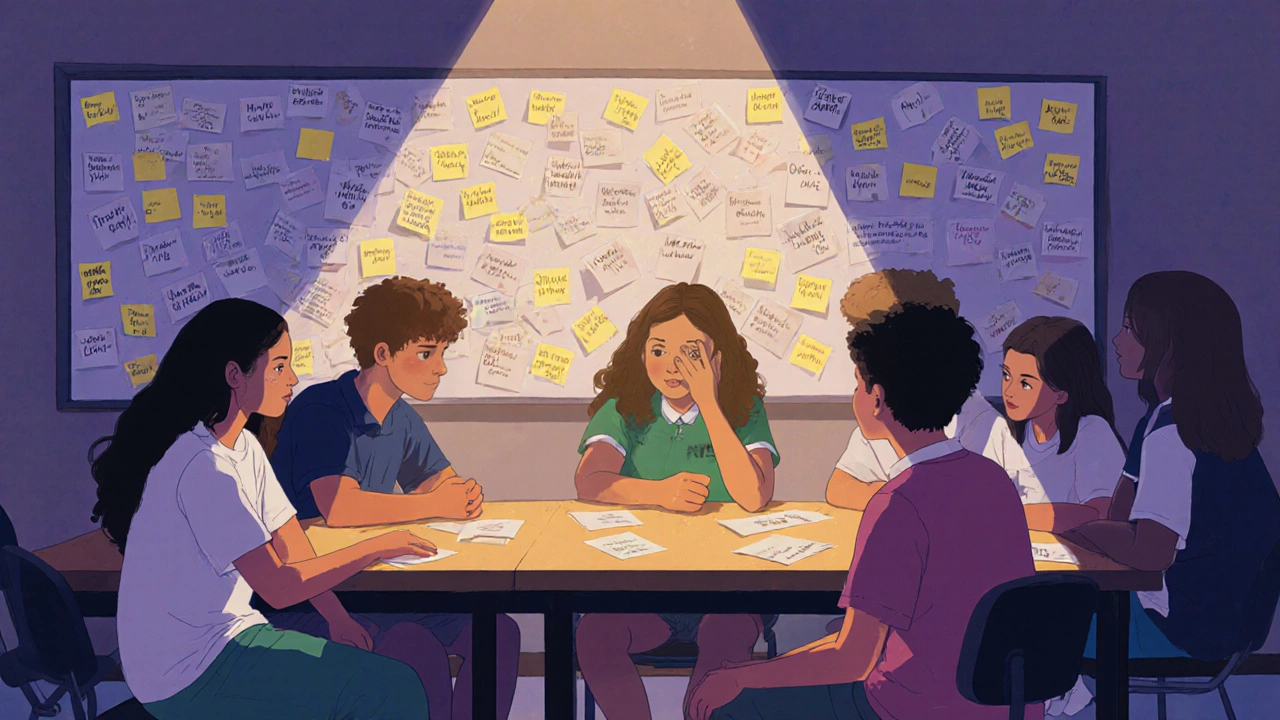Club Engagement Calculator
Discover how engaging your club is with our quick assessment tool. Answer 8 simple questions based on the article's principles to receive personalized feedback and actionable suggestions.
Most school clubs die a quiet death. Not because students don’t want to join, but because they’re stuck doing the same thing every week-board games, paperwork, or listening to the same teacher drone on about "teamwork." If your club feels like a chore, it’s not the kids. It’s the structure. Making a school club interesting isn’t about buying fancy supplies or hiring a celebrity speaker. It’s about giving students real control, real purpose, and real fun.
Start with what students actually care about
Don’t assume you know what they want. Ask them. Not in a survey that gets ignored. Talk to them in the hallway, during lunch, or even send a quick text poll: "What would make you show up after school?" One school in Bristol started a "Chill & Chat" club after a student said, "I just want somewhere to hang out without being told what to do." That club now has 40 regular members. No agenda. Just snacks, music, and open mic nights.Another group wanted to talk about mental health but felt awkward raising it in class. So they launched "Mind Mates"-a peer-led club where students share stories anonymously through written notes or voice memos. No pressure. No judgment. Just listening. Attendance doubled in two weeks.
Let students run it
The biggest mistake? Adults trying to control every detail. If you’re the one picking the activities, planning the meetings, and deciding who speaks, you’re not building a club-you’re running a mini-classroom.Give students leadership roles. Not just "president" and "secretary." Let them be:
- Activity Designer - picks one event per month
- Media Lead - runs Instagram or TikTok for the club
- Snack Coordinator - budgets and buys treats (yes, this matters)
- Feedback Collector - asks members what they liked and hated after each meeting
At a secondary school in Easton, students took over a photography club. Instead of learning aperture settings, they went out every Friday to document local street art. They turned it into a digital gallery on the school website. Teachers didn’t plan it. Students did. And suddenly, the club had more members than the football team.
Make it feel like something bigger
Kids don’t join clubs to kill time. They join because they want to feel like they matter. So give them a mission.A group of 14-year-olds in Bedminster turned their book club into "Books for Bedsides." They collected used books, wrapped them in colorful paper, and delivered them to children’s wards at the Bristol Royal Infirmary. Each book had a handwritten note: "This one’s for you. Hope it makes you smile." The hospital started asking for more. The club went from 8 members to 32.
Another club started a "Compliment Wall" outside the cafeteria. Students wrote anonymous nice notes on sticky notes and stuck them up. Within a month, teachers reported fewer fights at lunch. No one told them to do it. They just saw a need and acted.

Use the real world, not just the classroom
Clubs that stay inside the school building feel like homework with extra steps. Break out.Instead of learning about recycling in science class, start a "Zero Waste Crew" that audits the school’s trash. They track what gets thrown away, talk to the cafeteria staff, and propose changes. One team convinced the school to switch to reusable trays-and saved £1,200 a year. That money? Now funds their monthly pizza nights.
Another group partnered with a local community garden. Every Thursday after school, they planted herbs, harvested veggies, and sold them at the farmers’ market. The profit paid for club t-shirts. The gardeners taught them. The students taught the market-goers about composting. Real skills. Real impact.
Build rituals, not routines
Routines are boring. Rituals are memorable.At one school, the gaming club started a tradition: every first Friday, they played a game blindfolded. No screens. Just sound. Someone described the game. Others guessed. It was silly. It was loud. It was unforgettable.
Another club ended every meeting with "One Win." Each person shares one thing they’re proud of that week. It could be acing a test, helping a sibling, or just showing up. No one has to speak. But most do. And those moments? They’re what keep kids coming back.

Don’t force participation. Invite it.
You don’t need 50 members to be successful. You need 10 who show up because they love it.One teacher tried to grow her coding club by forcing sign-ups. No one came. Then she stopped pushing. She just left a sign-up sheet on the library table with a note: "If you’ve ever wondered how apps are made, come try this. No experience needed. Bring a snack. We’ll figure it out together." Within a week, six students showed up. One of them had never touched a computer. Now she’s building her own app.
Clubs that feel exclusive or intimidating die fast. Clubs that feel welcoming? They grow.
Let them fail-and celebrate it
Not every idea will work. That’s okay.A club tried to host a talent show. No one signed up. They canceled. Instead of feeling like a failure, they turned it into a "What Went Wrong?" meeting. Students laughed. They wrote down ideas: "Maybe we should’ve asked for acts earlier," "We should’ve done it during lunch," "We needed a DJ." The next month, they tried a "Mini Talent Jam" during lunch. Twenty kids performed. The staff joined in. Someone did a magic trick with a sandwich.
Failure isn’t the enemy. Silence is.
Keep it simple. Keep it real.
You don’t need a budget, a sponsor, or a fancy room. You need:- A space where kids feel safe to be themselves
- A reason to show up that’s bigger than grades
- Permission to be weird, loud, messy, or quiet
One of the most popular clubs in a Bristol school is called "The Quiet Corner." No agenda. No rules. Just a beanbag chair, a pile of coloring books, and a sign that says: "You don’t have to talk. Just be here." It’s not glamorous. But it’s the only place some students feel seen.
Make your club interesting? Stop trying to impress. Start trying to understand. Listen more. Control less. Let them lead. And if you’re lucky? You won’t just have a club. You’ll have a community.
What if no one shows up to my club?
Start small. Invite five people you think might like it. Don’t make it a big announcement. Just ask: "Hey, would you come to a chill hangout after school? Snacks included." Sometimes, one person brings another. Keep it low-pressure. If it feels like an obligation, it won’t last.
Do I need a teacher to run the club?
You need an adult who can sign off on the club for safety and space, but they shouldn’t run it. Their job is to be a backup, not a boss. Let students make decisions. The teacher can help with logistics-booking rooms, ordering pizza, sending emails-but the ideas? That’s all students.
How do I get funding for snacks or supplies?
Start with what you have. Bring in homemade cookies. Use free online tools. Ask the school if they have a student activity fund-most do. Or, turn your club’s project into a fundraiser. A book club that donates books can sell used ones at a stall. A gardening club can sell herbs. Money comes from doing something valuable, not asking for handouts.
What if the club gets too big and becomes chaotic?
That’s a good problem to have. Split into smaller groups. Create sub-clubs. A gaming club can become "Board Games" and "Video Games." A creative club can split into "Writing" and "Art." Give each group its own leader. Keep the core values-fun, respect, inclusion-but let different interests grow their own space.
How do I keep students engaged beyond the first month?
Change things up every 4-6 weeks. Try a new activity. Invite a guest-maybe a local artist, a college student, or even a parent with a cool hobby. Let students vote on the next theme. Keep the energy alive by celebrating small wins. A simple "You did it!" note on the wall goes further than any trophy.
Can a club still be interesting if it’s academic?
Absolutely. But it has to feel real. A math club that just does worksheets won’t last. A math club that designs escape rooms using puzzles, or builds a scale model of the school using geometry, will. Turn theory into action. Let students solve problems that matter to them-not just the ones in the textbook.
